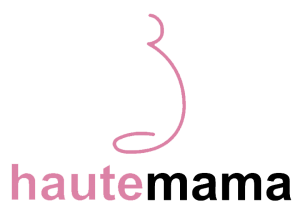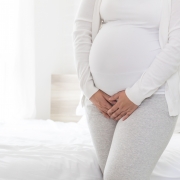How to have a happy bladder in three easy steps
When you laugh, cough, sneeze or even change positions do you pee a little? You’re not alone, 50-60% of all pregnant women leak urine during pregnancy.
First trimester: Frequent urination is one of the first signs of pregnancy for many women. In addition to hormonal changes that increase urine production, your uterus expands and presses on your bladder – even when your baby is tiny.
Second trimester: Happily, as your uterus expands it will rise higher in your belly, away from your bladder, giving your temporary pee relief.
Third trimester: In the last months of pregnancy, the urge to go frequently will come calling again. Your baby will drop in your pelvis and put pressure on your bladder. You may even find yourself getting up several times during the night.
An unhappy bladder can impact your day-to-day function, energy levels, sex life, and even your confidence. The good news is that adopting some easy lifestyle habits, from what you eat and wear to changing your diet and drinking more water, can make a world of difference. Here are 3 easy steps to a happy bladder:
Step One: What you eat can impact your bladder’s happiness. Some foods and dehydration can make your bladder very unhappy. Some believe that drinking less water will mean they’ll pee less. This is not true! Dehydration makes your bladder irritated and angry. Drink water throughout the day, don’t drink it all at once. BTW, dehydration can also lead to preterm labour so hydration is important for healthy labour.
Certain foods can make your bladder unhappy too. They can make leaking and urge worse so it’s best to avoid them until you get your bladder back under control. Avoid carbonated drinks, coffee, teas, fruit juices, artificial sweeteners and chocolate!
Step two: A well-trained bladder is a happy bladder. Do your Kegel exercises! These will strengthen the muscles surrounding the urethra, which you use to hold in urine. To do a Kegel, tighten and then relax those muscles – as if you are trying to stop pee. You can do your Kegels anywhere, anytime, while you’re sitting or standing. Try keeping the muscles contracted for about 10 seconds, 10 – 20 times in a row, at least three times a day.
Trust me when we say you’ll be happy you did these long after your little one arrives.
Step three: What you wear affects your bladder. Wearing those Louboutins can make your bladder a wee bit irritated. Wearing high heels negatively affects pelvic alignment. The pelvis houses the bladder and uterus. When the pelvis is out of alignment, the pelvic floor muscles lose their ability to contract, relax and becomes dysfunctional. Which ultimately means it loses its ability to control urine flow.
We know that not all stylish bump-styles work with cute flats if you do wear heels often simply add a support pregnancy belt that goes under the belly and wraps around the back. Wearing a pregnancy support belt will help relieve pelvic pressure and un-weight the pelvis.

